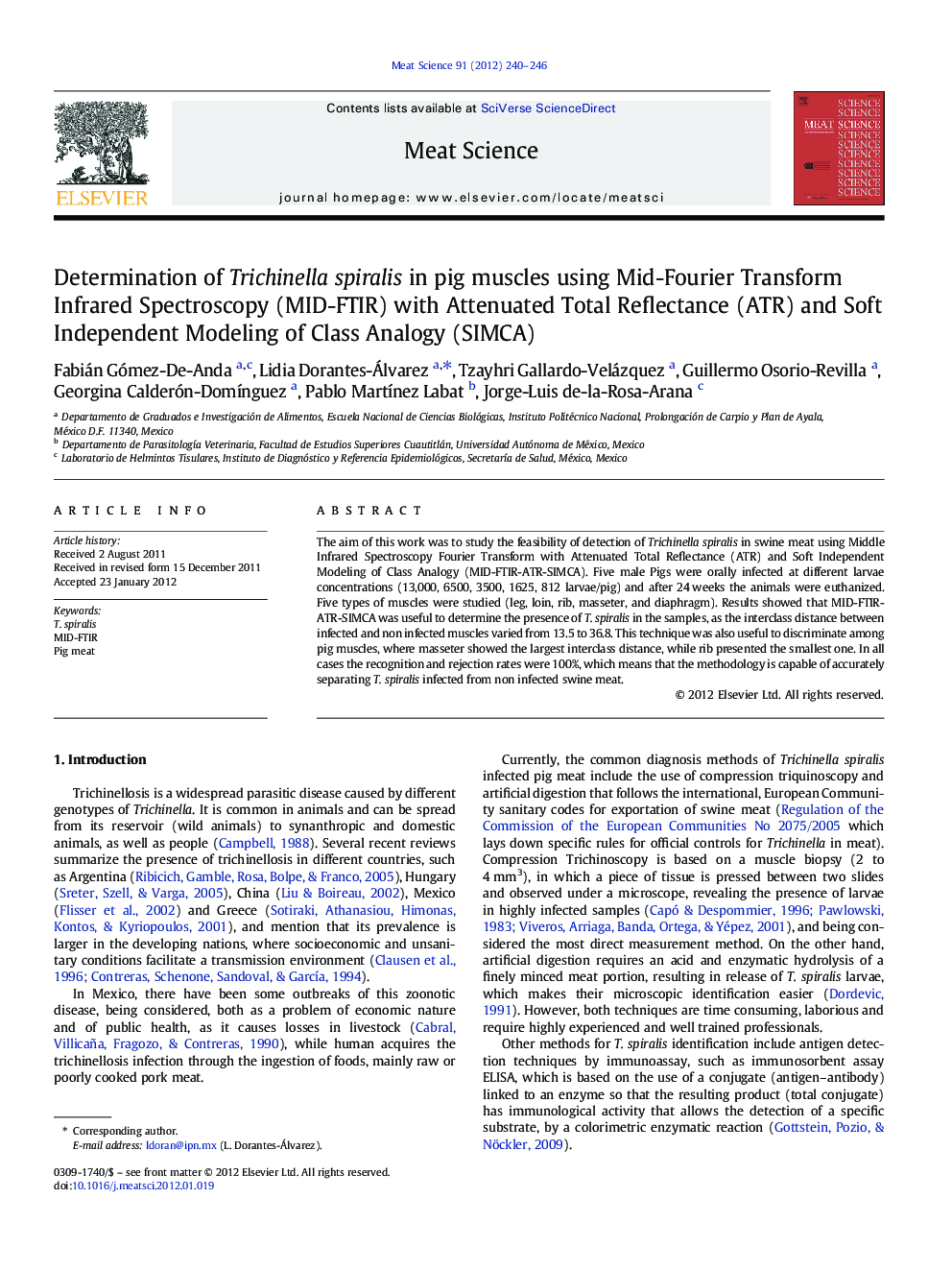| Article ID | Journal | Published Year | Pages | File Type |
|---|---|---|---|---|
| 5792482 | Meat Science | 2012 | 7 Pages |
The aim of this work was to study the feasibility of detection of Trichinella spiralis in swine meat using Middle Infrared Spectroscopy Fourier Transform with Attenuated Total Reflectance (ATR) and Soft Independent Modeling of Class Analogy (MID-FTIR-ATR-SIMCA). Five male Pigs were orally infected at different larvae concentrations (13,000, 6500, 3500, 1625, 812 larvae/pig) and after 24Â weeks the animals were euthanized. Five types of muscles were studied (leg, loin, rib, masseter, and diaphragm). Results showed that MID-FTIR-ATR-SIMCA was useful to determine the presence of T. spiralis in the samples, as the interclass distance between infected and non infected muscles varied from 13.5 to 36.8. This technique was also useful to discriminate among pig muscles, where masseter showed the largest interclass distance, while rib presented the smallest one. In all cases the recognition and rejection rates were 100%, which means that the methodology is capable of accurately separating T. spiralis infected from non infected swine meat.
⺠Rapid detection of Trichinella spiralis in pig muscles. ⺠A new technique to determine the presence of T. spiralis in pig muscles. ⺠Using Infrared Spectroscopy is possible to determine Trichinella spiralis. ⺠Five pig muscles may be used to detect Trichinella by Infrared Spectroscopy. ⺠This technique was useful to discriminate among pig muscles.
